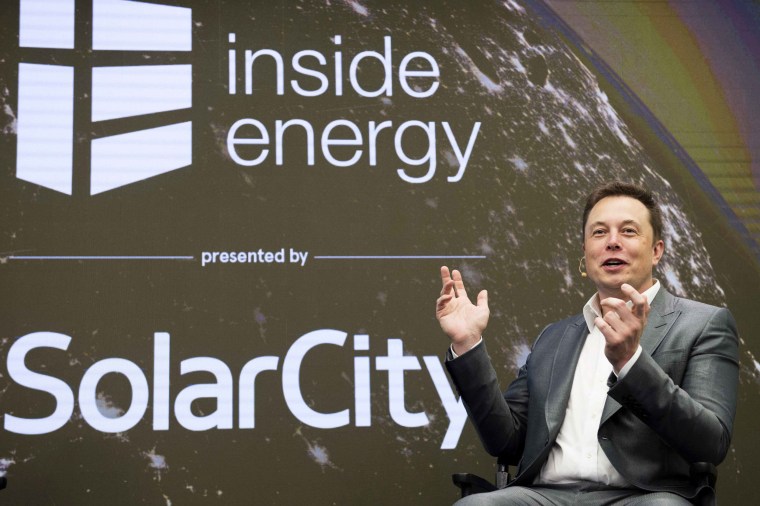We finally know what Elon Musk is thinking.
Tesla Motors' founder and CEO released Wednesday a second installment of Tesla's "Master Plan," a sequel to comments he posted on the company blog in 2006.
In the latest version of Tesla's master plan Musk paints a picture of a renewable energy enterprise, with goals such as creating solar roofs that are seamlessly integrated with battery storage, an expanded vehicle product line that includes heavy duty trucks and large passenger transport vehicles, working toward "true self-driving" that is 10-times safer than manual driving, and enabling your car to make money for you when you aren't using it.
Creating the "solar-roof-with-battery product" is the first piece of the plan. Musk envisions a system that would turn individuals (or perhaps more accurately, homeowners) into their own utilities. This is why Musk wants Tesla to fully acquire SolarCity.
He considers the fact that Tesla and SolarCity were ever separate to begin with "largely an accident of history," saying that the time is right to combine Tesla's scalable Powerwall wall battery with SolarCity's solar panels.
Secondly, Musk wants to expand Tesla's line to "cover the major forms of terrestrial transport," which are, in short, trucks, buses, and a unique kind of ride sharing scheme based on autonomous cars.
Related: What's Next for Tesla, Amid Safety Probes and Weak Production?
The company has both a Tesla Semi truck and a "high passenger-density" bus in development, and both should be "ready for unveiling next year," the plan said.
Along with other tech and auto companies, Tesla is working on making its cars fully autonomous, which is a key step in the plans the company has for its product line.
"When true self-driving is approved by regulators, it will mean that you will be able to summon your Tesla from pretty much anywhere. Once it picks you up, you will be able to sleep, read or do anything else en route to your destination," Musk wrote.
Musk explained why the company moved so quickly to stock its cars with its partially autonomous technology, called Autopilot, and why the company has resisted calls to disable the feature after one user died in a crash in May.
He said even partially autonomous cars are "already significantly safer than a person driving by themselves and it would therefore be morally reprehensible to delay release simply for fear of bad press or some mercantile calculation of legal liability."
He added, that it would "no more make sense to disable Tesla's Autopilot, as some have called for, than it would to disable autopilot in aircraft, after which our system is named."
Related: Consumer Reports Urges Tesla to Disable Auto Steering
In the blog post, Musk also said he penned his first master plan as a way to defend himself from the inevitable critics who would say he was "just caring about making cars for rich people."
"Unfortunately, the blog didn't stop countless attack articles on exactly these grounds, so it pretty much completely failed that objective," he said.
The plan also aimed to explain how the company's actions fit into a larger picture, "so that they would seem less random," Musk said.
"The point of all this was, and remains, accelerating the advent of sustainable energy, so that we can imagine far into the future and life is still good. That's what 'sustainable' means. It's not some silly, hippy thing -- it matters for everyone," he said.
"Master Plan, Part Duex" evolves this vision with the hope of accelerating the shift to sustainability.
